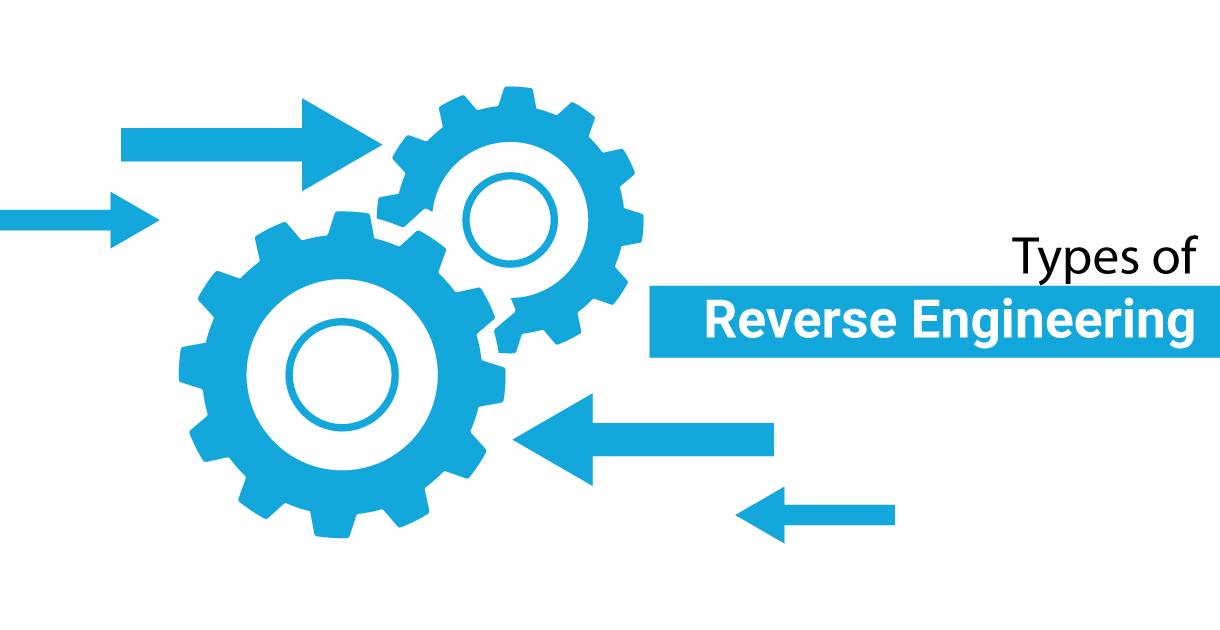Reverse engineering is a process that involves breaking down a product to analyse its design, functionality, and components. It is often used to understand how a product works, to replicate its design, or to identify ways to improve it. In this blog post, we will explore the different types of reverse engineering that are commonly used in industries such as manufacturing, automotive, and aerospace. We will also discuss how reverse engineering can be beneficial for businesses and highlight some of the key tools and technologies used in the process.
Reverse Engineering
Reverse engineering refers to the process of breaking down an object, system, or software into its component parts, understanding how they work, and then using that information to create a duplicate or to improve upon the original. This process can be used for a variety of purposes, such as to improve existing products, to replicate obsolete components, or to study a competitor’s product. Reverse engineering is often used in manufacturing, software development, and engineering fields to gain insight into how a product was designed, its functionalities, and its limitations.
The Evolution and Future of Reverse Engineering
Reverse engineering has come a long way since its inception. Initially, it was mostly used in manufacturing industries, but now it has found its way into various fields such as software development, automotive, aerospace, and even medical industries.
In the future, reverse engineering will continue to play a significant role in advancing technology. As new products are developed and released, there will be a need to analyze and understand them better. Reverse engineering will help to achieve this goal by providing a way to deconstruct products and study their components.
In addition, reverse engineering will continue to evolve technologically. With the increasing use of 3D printing, reverse engineering can create digital models that can be printed in 3D. This development will help to reduce the time and cost of production and improve the accuracy of the final product.
Overall, reverse engineering will continue to be a vital tool in product development and innovation. Its ability to analyze and improve existing products will help to drive technology forward and lead to more advanced and sophisticated products in the future.
Advantages of Reverse Engineering
Reverse engineering has several advantages, including:
- Cost savings: Reverse engineering can save money in product development by providing a more cost-effective way of recreating a product. It allows companies to avoid starting from scratch when creating a new product and can reduce development time and costs.
- Improved product design: Reverse engineering can help improve the design of existing products by identifying areas for improvement and optimization. It can also help engineers to understand how products work, which can lead to better designs and more efficient manufacturing processes.
- Product Compatibility: Reverse engineering can help ensure that replacement parts or products are compatible with existing products. This can be particularly useful for companies that have older products that are no longer in production.
- Competitive advantage: Reverse engineering can provide a competitive advantage by allowing companies to analyze competitors’ products and identify areas for improvement or new product development quickly and efficiently.
- Intellectual property protection: Reverse engineering can be used to protect intellectual property by identifying and documenting the design of existing products. This can help companies to protect their own designs and prevent others from copying their products.
Process of Reverse Engineering
The process of reverse engineering involves the following steps:
- Acquiring the object: The first step is to acquire the object that needs to be reverse-engineered. This can be done through various means such as purchasing the object, borrowing it, or using a 3D scanner to scan the object.
- Disassembly: The next step is to disassemble the object into its individual components. This can be done using various tools such as screwdrivers, pliers, and cutters.
- Analysis: Once the object has been disassembled, each component is analyzed to understand its function and design. This can be done through various methods such as visual inspection, measurements, and material testing.
- Reconstruction: The next step is to reconstruct the object in a digital format. This is done using CAD software to create a 3D model of the object. The accuracy of the 3D model depends on the accuracy of the measurements taken during the analysis stage.
- Documentation: Once the 3D model has been created, it is documented with detailed drawings, specifications, and other relevant information. This documentation is essential for manufacturing and future reference.
- Improvement: Reverse engineering can also be used to improve the design of an existing product. Once the 3D model has been created, it can be modified and improved using CAD software.
- Replication: Finally, the 3D model can be used to replicate the object using various manufacturing techniques such as 3D printing, injection molding, and CNC machining.
It is important to note that the reverse engineering process can be complex and time-consuming. It requires a skilled team of engineers and designers to ensure accurate and reliable results.
Types of Reverse Engineering
There are various types of reverse engineering methods, which can be broadly classified into the following categories:
- Black Box Reverse Engineering: In this type, the engineers analyze the external behavior of the product without any knowledge of its internal components or workings. They observe the inputs and outputs of the product to determine its functionality.
- Gray Box Reverse Engineering: In this type, the engineers have some knowledge about the internal workings of the product, such as its architecture or programming code, but not the complete details. They use this knowledge to reverse engineer the product and understand its functionality.
- White Box Reverse Engineering: In this type, the engineers have complete access to the internal workings of the product, such as its hardware and software components. They use this knowledge to reverse engineer the product and understand its functionality.
- 3D Reverse Engineering: This type of reverse engineering is used for physical objects. It involves creating a 3D digital model of an existing object using various scanning techniques, such as laser scanning or computed tomography (CT) scanning.
- Software Reverse Engineering: This type of reverse engineering is used to understand the software architecture of an existing product. It involves analyzing the compiled code to determine the programming logic and algorithms used in the product.
- Mechanical Reverse Engineering: This type of reverse engineering is used to understand the mechanical components of an existing product. It involves disassembling the product and analysing its individual parts to determine its design and functionality.
- Electronic Reverse Engineering: This type of reverse engineering is used to understand the electronic components of an existing product. It involves analyzing the circuit board and individual components to determine their design and functionality.
Each type of reverse engineering method has its own set of benefits and limitations, and the choice of method depends on the specific requirements of the product being reverse-engineered.
Conclusion
At Monarch Innovation, we specialize in providing reverse engineering services to our clients, leveraging cutting-edge technology and years of experience to deliver high-quality results. Our team of experts is dedicated to ensuring that our client’s needs are met and that they receive the best possible solutions to their engineering challenges. If you are looking for a reliable and experienced partner for your reverse engineering needs, look no further than Monarch Innovation. Contact us today to learn more about our services and how we can help you achieve your engineering goals.





